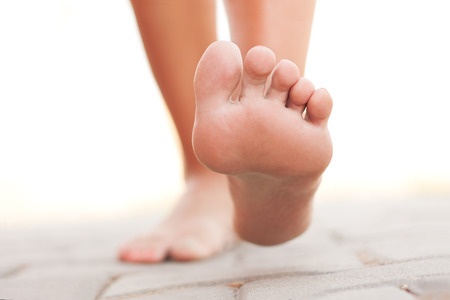
Corns and calluses are created as the body’s natural reaction to extreme friction and pressure on the skin that is often caused by poorly-fitting footwear. Athletes and people who are on their feet all day for work are more susceptible due to the additional pressure and stress on the feet.
What are some differences between corns and calluses?
- Corns—These skin problems occur where your toes rub together, or where they scrape against the inside of your footwear. They tend to be much smaller and more rounded than calluses. Painful, oozing corns frequently occur on the top of badly bent hammertoes that can push hard into the top of your shoes.
- Calluses—Calluses tend to be much larger than corns and don’t have the tender edges that corns often exhibit. Problematic calluses often appear on the heel or ball of the foot and can worsen into heel fissures that can cause painful cracking and bleeding.
Conservative treatments for corns and calluses include the following:
- Isolate the corn with pads—Specially-formed moleskin pads are placed over a corn to isolate it from your footwear and other toes. This will also prevent rubbing against the inside of your footwear.
- Soften skin with warm water foot soaks for easier skin removal—Bathing your feet in warm, soapy water will soften the skin on calluses. You can then much more easily shave off the dead skin with an emery board or pumice stone.
If you are having problems with corns and calluses, see your foot doctor for the best care. At Podiatry Center of New Jersey, Dr. Russell Samofal treats a variety of conditions such as sports injuries, diabetic foot problems, pediatric foot conditions, toe deformities, arthritis, nail fungus, arch problems and heel pain. Equipped with advanced technologies and a dedicated staff, Podiatry Center of New Jersey provides individualized high-quality care for patients all across Morris, Passaic, Bergen and Essex counties. For all your foot and ankle problems, contact our Wayne office at (973) 925-4111 for an appointment.















